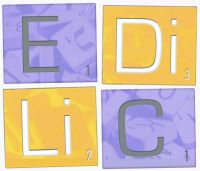Speaker
Description
Language education in Japan remains defined by double monolingualism; the domestic language is (standardized) Japanese, and English is given primacy as the language of international communication (Oyama & Pearce, 2019). Although Japan’s actual internationalization includes many geopolitically important languages (MEXT, 2022), most learners only experience English in pre-tertiary education (Oyama & Yamamoto, 2020).
While plurilingualism is gaining traction in Japan (e.g., Nishiyama, 2017; Moore et al., 2020a;b), the concept often remains understood as simply multiplying languages within a monolingual orientation (e.g., Torikai et al., 2017). Teacher training thus continues to prioritize surface-level English ability, potentially depriving pre-service teachers of opportunities to explore their own plurilingualism, and to develop the plurilingual literacy necessary to engage with learners of increasingly diverse backgrounds.
In this presentation, multimodal polyethnography (Olt & Teman, 2019) was adopted as a research method, and as a training tool for two pre-service teachers, in an attempt to understand how fostering a plurilingual stance (Marshall & Moore, 2018) might contribute to teachers’ ability to give recognition and support to other-language minorities in a monolingualized context (Pearce, 2025), while also contributing to their primary role as English teachers. To this end, analyses of longitudinal discussions on plurilingualism, grounded in visual linguistic autobiographies (Kalaja & Melo-Pfeifer, 2024), and centered on the pre-service teachers’ experiences as learners, and as supporters in public school contexts, are explored.
The discussion centers on how multimodal polyethnography, which includes multiple voices and modes of data, might help to overcome the influence of a pervasive monolingual bias (May, 2014) in the fostering of plurilingual literacy, and how such explorations might contribute to pre-service teachers’ ability to identify teachable aspects of their own and others’ plurilingualism that go beyond the merely lingual in promoting linguistic equity and inclusive practice in diversifying classrooms.
References
Kalaja, P., & Melo-Pfeifer, S. (Eds) (2024). Visualising Language Students and Teachers as Multilinguals: Advancing Social Justice in Education. Multilingual Matters.
MEXT. (2022). Nihongo shidō ga hitsuyō na jidō seito no ukeire jōkyōtō ni kansuru chōsa kekka no gaiyō: Sokuhō [On results of investigation into the accepting of child learners that require Japanese language support (2022)]. https://www.mext.go.jp/content/20220324-mxt_kyokoku-000021406_02.pdf
Nishiyama, J.N. (2017). Essor du plurilinguisme dans le Japon modern: Du plurilinguisme intensif pour les élites au plurilinguisme extensif pour les masses. European Journal of Language Policy 9(2), 170-182. https://doi.org/10.3828/ejlp.2017.11
Marshall, S. and Moore, D. (2018) Plurilingualism amid the panoply of lingualisms: Addressing critiques and misconceptions in education. International Journal of Multilingualism 15 (1), 19-34. https://doi.org/10.1080/14790718.2016.1253699
May, S. (Ed) (2014b). The Multilingual Turn: Implications for SLA, TESOL and Bilingual Education. Routledge. https://doi.org/10.4324/9780203113493
Moore, D., Oyama, M., Pearce, D.R., & Kitano, Y. (2020a). Plurilingual education and pedagogical plurilanguaging in an elementary school in Japan: A perspectival origami for better learning. Journal of Multilingual Theories and Practices 1(2), 243-265. https://doi.org/10.1558/jmtp.17783
Moore, D., Oyama, M., Pearce, D.R., Kitano, Y., & Irisawa, K. (2020b) Biographies langagières et EMILE, quand tous les chemins mènent… au plurilinguisme, même au Japon ! [Linguistic biographies and CLIL: When all roads lead to multilingualism, even in Japan!]. Contextes et Didactiques 15(1), 13-31. https://doi.org/10.4000/ced.2051
Olt, P. A., & Teman, E.D. (2019). Un[bracketed]: Phenomenological polyethnography. Qualitative Research Journal 19(2), 146-155. https://doi.org/10.1108/QRJ-12-2018-0001
Oyama, M., & Pearce, D.R. (2019). Promoting bilingualism in Japanese elementary schools: Exploring the possibilities of the awakening to languages approach. Japan Journal of Multilingualism and Multiculturalism 25(1), 65-86.
Oyama, M., & Yamamoto, S. (2020). Pluralistic approaches for Japanese university students preparing to study abroad. European Journal of Language Policy 12, 37-61. https://doi.org/10.3828/ejlp.2020.3s
Pearce, D.R. (2025, forthcoming). Plurilingual education in a monolingualised nation: Exploring new frontiers in language teaching in Japan. Multilingual Matters.
Torikai, K., Otsu, Y., Erikawa, H., & Saito, Y. (Eds) (2017). Eigo dake no gaikokugo kyōiku wa shippai suru fukugengoshugi no susume [English-only foreign language education will fail: A recommendation for Plurilingualism]. Hitsuji shobo.
Content/contenu/Inhalt 2
L'enseignement des langues au Japon reste défini par un double monolinguisme : la langue nationale est le japonais (standardisé) et l'anglais est considéré comme la langue de communication internationale (Oyama & Pearce, 2019). Bien que l'internationalisation réelle du Japon comprenne de nombreuses langues importantes sur le plan géopolitique (MEXT, 2022), la plupart des apprenants ne connaissent l'anglais que dans l'enseignement prétertiaire (Oyama & Yamamoto, 2020).
Si le plurilinguisme gagne du terrain au Japon (par exemple, Nishiyama, 2017 ; Moore et al., 2020a, 2020b), le concept reste souvent compris comme une simple multiplication des langues dans le cadre d'une orientation monolingue (par exemple, Torikai et al., 2017). La formation des enseignants continue donc à donner la priorité à la maîtrise de l'anglais en surface, privant potentiellement les enseignants en formation initiale de la possibilité d'explorer leur propre plurilinguisme et de développer la littératie plurilingue nécessaire pour s'engager auprès d'apprenants d'origines de plus en plus diverses.
Dans cette présentation, la polyethnographie multimodale (Olt & Teman, 2019) a été adoptée comme méthode de recherche, et comme outil de formation pour deux enseignants en formation, dans le but de comprendre comment la promotion d'une position plurilingue (Marshall & Moore, 2018) pourrait contribuer à la capacité des enseignants à reconnaître et à soutenir les minorités d'autres langues dans un contexte monolingue (Pearce, 2025), tout en contribuant également à leur rôle principal en tant qu'enseignants d'anglais.
| Title/ titre/Titel 2 | Formation des enseignants dans un Japon « monolingue » : une exploration du potentiel de la polyethnographie multimodale pour la littératie plurilingue |
|---|

